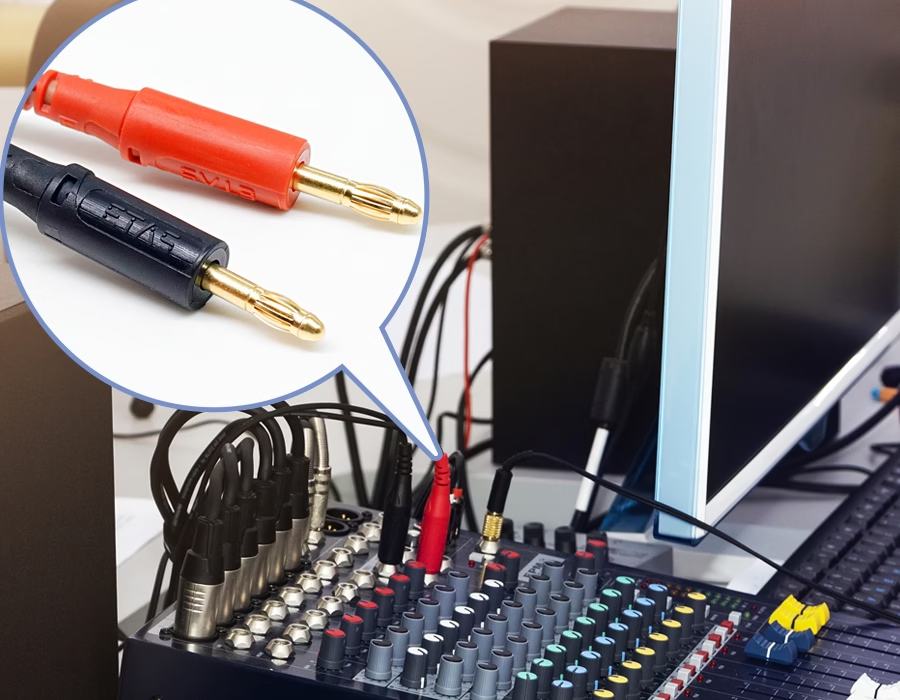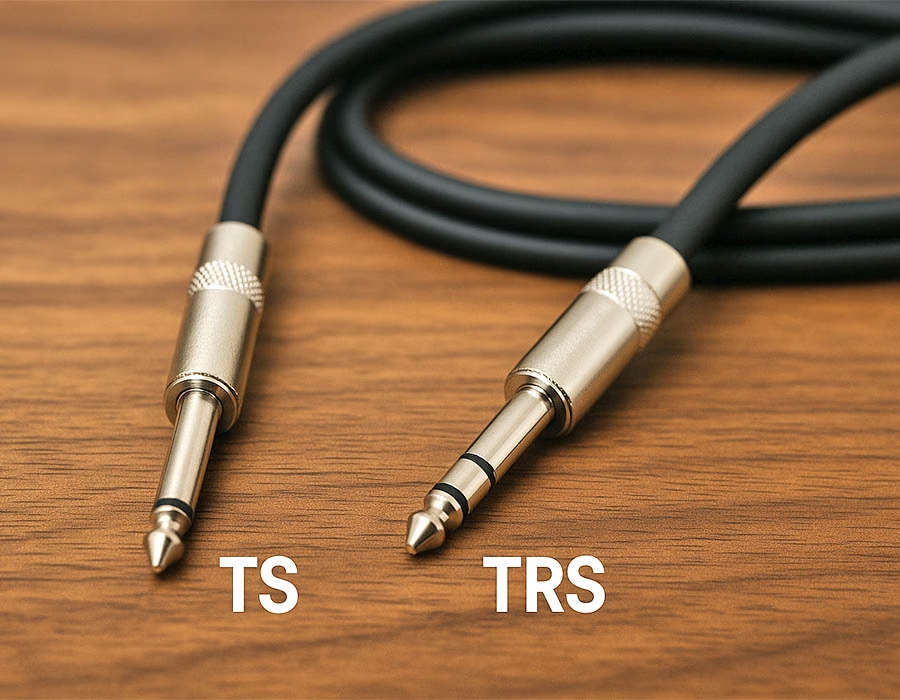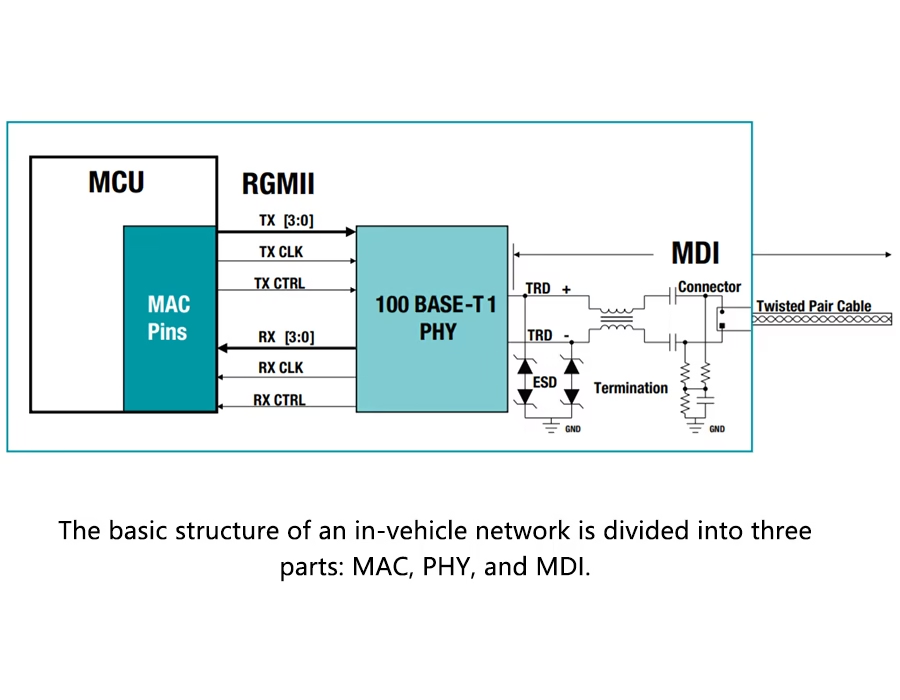You’ve invested in high-quality speakers and possibly a dependable amplifier, but the sound quality still feels off.
Before blaming the equipment, inspect your speaker wires. Simple wiring problems are surprisingly common causes of sound-quality issues.
At Romtronic, we’ve helped countless original equipment manufacturers (OEMs) and integrators solve similar problems. Here are the five most common speaker cable mistakes and how to correct them.

1. Using the Wrong Cable Gauge
Choosing wire gauge (AWG) isn’t just a numbers game.
If the wire is too thin, the resistance will dampen the signal; if it’s too thick, you’ll pay for the extra copper.
| Cable Length | Recommended Gauge (AWG) | Typical Use |
|---|---|---|
| 1–25 ft | 16 AWG | Small rooms, home systems |
| 25–50 ft | 14 AWG | Mid-size installations |
| 50+ ft | 12 AWG | Large venues, pro audio |
If you’re running long cables in a studio or production facility, choose thicker wire—the lower the resistance, the more precise the sound.
👉 Tip: For industrial or OEM projects, our custom cable assemblies offer precise AWG and shielding options.
2. Ignoring Cable Polarity
Let’s be honest: We’ve all misconnected a speaker at least once.
The result? Phase cancellation. Your audio sounds flat and dull, as if the air isn’t flowing through the speaker in the right direction.
To fix it:
- Before turning on your speakers, check the polarity.
- For easier installation, use color-coded or clearly marked speaker cables.
- For large or multi-speaker systems, consider using custom audio cable assemblies to ensure consistent polarity across all channels.
3. Poor Termination and Connectors
Loose banana plugs, half-crimped fork plugs, and frayed bare wire can all cause signal loss and interference.
A good termination should be mechanically secure and electrically clean.
Upgrade to:
- Gold-plated banana plugs (to reduce oxidation).
- Professionally crimped or soldered connectors.
- Strain relief to prevent breakage during bending.
Romtronic offers custom speaker cables with precise terminations and mechanical and electrical integrity testing.

4. Running Speaker Cables Near Power Lines
Electrical noise can be very troublesome; it can easily jump from high-voltage lines to signal lines.
Routing speaker wire near AC lines or motors can cause hum and interference.
Fix it:
- Keep at least 12 inches away from electrical conduit.
- If separation is not possible, cross the cables at 90 degrees.
- Use insulated speaker wire in noisy areas.
Romtronic’s EMI-shielded custom cable assemblies exceed stringent noise-reduction standards for industrial or medical applications.
5. Overlooking Cable Environment and Durability
Cables aren’t “plug and play.”
Temperature, humidity, and vibration all take their toll over time.
PVC jackets break easily at low temperatures, while cheaper insulation degrades at high temperatures.
Choose the right cable for your environment:
- Silicone or TPE jackets offer flexibility and heat resistance.
- Braided shields provide mechanical protection.
- Custom overmolding provides strain relief and seals against moisture.
If your equipment is located in a harsh industrial or outdoor environment, consider Romtronic’s custom solutions.
Quick FAQ: Common Speaker Cable Questions
A: Technically, yes, but performance will be compromised. Audio-grade cables use purer copper and higher-quality insulation to ensure reliable signal transmission.
A: Of course. Resistance increases with cable length, but signal loss decreases with cable thickness.
A: Not always. The key isn’t “cheap,” but rather suitability for the application—appropriate wire diameter, shielding, and build quality.
🎯 Wrap-Up: Small Fixes, Big Sound
Avoiding these five faults will immediately increase clarity, balance, and volume.
Speaker wires may not be the most aesthetically pleasing, but they are the unsung heroes of any fantastic sound system.
Consider custom cables for OEM, pro audio, or industrial systems. 🔗 Contact Romtronic’s engineering team to develop cables that satisfy your system’s precise power, distance, and EMI specifications.
Alternatively, look through our bespoke cable assemblies to learn how custom cabling can benefit your next system.
.avif)
Sam Wu is the Marketing Manager at Romtronic, holding a degree in Mechatronics. With 12 years of experience in sales within the electronic wiring harness industry, he manages marketing efforts across Europe. An expert in cable assembly, wiring harnesses, and advanced connectivity solutions, Sam simplifies complex technologies, offering clear, actionable advice to help you confidently navigate your electrical projects.


